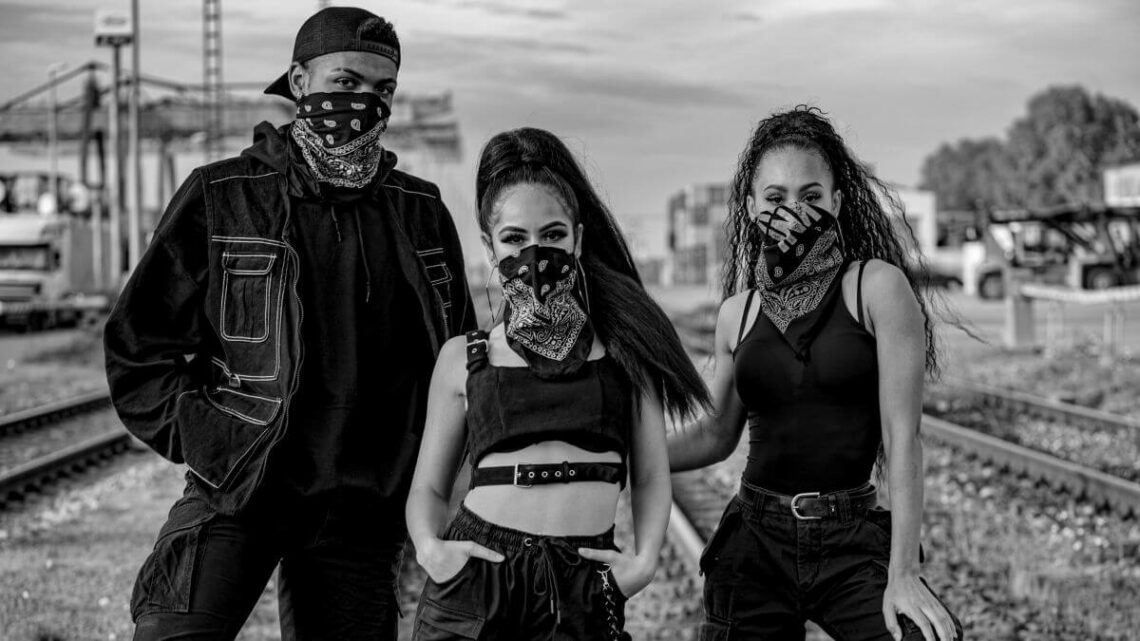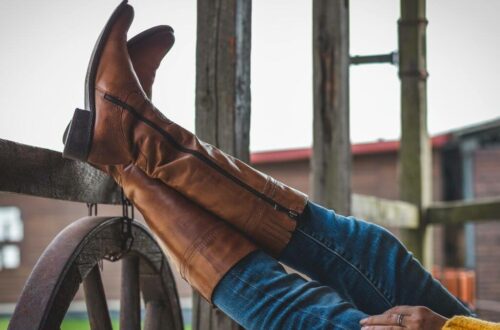
What Bandana Colors Really Mean and Which to Avoid
We’re delving into an accessory that’s as versatile as it is stylish – the bandana! Now, you might think, ‘It’s just a piece of cloth, right?’ But oh, how this simple square can tell a thousand stories! From its roots in functionality to becoming a symbol of identity and style, bandanas are more than just fashion statements. But wait, there’s a twist! Did you know the color of a bandana can carry a whole different meaning?
And in some places, it might be more than just a fashion choice. It’s a conversation starter, isn’t it? So, let’s navigate the vibrant world of bandanas together. We’ll explore their meanings, the dos and don’ts of wearing them, and even how to style them like a pro. Grab your favorite bandana, and let’s get started!
What is Bandana?
When you hear ‘bandana,’ what comes to mind? A colorful piece of cloth, maybe? But there’s so much more to this simple square of fabric.
Let’s start with the basics. A bandana, also known as a kerchief, is typically a large, vibrant piece of cloth, usually square or triangular. Crafted from cotton or other lightweight fabrics, it’s an accessory that’s as practical as it is stylish. But did you know the word ‘bandana’ has its roots in the Hindi language? It comes from ‘bandhnu,’ which means ‘to tie.’ Pretty cool, right?
Bandanas are the Swiss Army knives of the fashion world. Primarily, they’re worn on the head – think of a cool headband to keep your hair in check or a protective layer against the sun. But that’s just scratching the surface. You can tie them around your neck, not just for a fashion statement but also for practical uses like absorbing sweat or protecting against the chill.
And here’s something interesting – bandanas are not just about looks. They’ve been used for protection, covering the face from dust and dirt, and even as a handy tool, serving as handkerchiefs or washcloths. But wait, there’s a twist! Bandanas have also been used for signaling, especially in terms of group identities – think of the red and blue bandanas symbolizing different groups.
Originating from India, bandanas made their way to the United States with sailors in the early 1800s. And guess what? They became a symbol of rebellion and freedom during the 1960s and 70s, thanks to the counterculture movement. Today, they’re a beloved accessory for all ages and styles, boasting an incredible array of colors and patterns.
Bandana Colors Meaning:
Ever wondered why bandanas come in so many shades? Each color isn’t just a fashion statement; it’s a story. Let’s unravel these colorful tales together!
Red Bandanas Meaning:
Love and Caution: Red is a color of extremes. It’s the most common association with red bandanas, especially in the United States, linked to the Bloods gang. But beyond the gang significance, red bandanas also speak the language of love, passion, and danger. When you sport a red bandana, you’re embracing these powerful emotions.
Blue Bandanas Meaning:
Calmness with an Edge: Blue, the calm counterpart to red, often represents the Crips gang. Yet, in a broader context, blue is a soothing color that conveys trust, loyalty, and peace. It’s like a visual representation of a calm blue ocean on a sunny day.
Black Bandanas Meaning:
The Neutral Statement: Black bandanas stand out for their neutrality. They’re a symbol of sophistication and a hint of rebellion. Choosing a black bandana could be your way of saying, ‘I’m an individual.’
White Bandanas Meaning:
The Symbol of Peace: White bandanas are often symbols of peace and surrender. They also represent purity and innocence, like a blank canvas waiting to be painted with life’s experiences.
Yellow Bandanas Meaning:
Sunshine and Caution: In Chicago, yellow bandanas are primarily associated with the Latin Kings gang, but generally, yellow symbolizes happiness and optimism. It’s like wearing a splash of sunshine.
Purple Bandanas Meaning:
Royalty and Group Identity: Purple bandanas are known for their association with the Grape Street Crips. However, purple also signifies royalty, luxury, and confidence. It’s a royal declaration of your personal style.
Paisley and Other Colors Meaning:
A Fashion Canvas: The paisley pattern in bandanas is a classic symbol of fashion. Other solid colors like green, orange, and pink allow you to express your personal style or support a cause.
Is it safe to wear a bandana in public in the US?
Bandanas are fashionable and functional, but there’s more to consider than just style. Let’s delve into what you need to know to wear your bandana with confidence and safety.
Understanding the Color Code:
Firstly, let’s talk about colour. Colours like red and blue can be tricky due to their association with gangs. It’s not about fashion in these cases; it’s about safety. To avoid any potential misunderstandings, especially if you’re concerned about being mistaken for a gang member, steer clear of these colors. Remember, a blue bandana might be just a cool accessory for you, but in some places, it could send a very different message.
Location, Location, Location:
Location is key. In some areas, particularly those with high gang activity, any bandana, regardless of color, might draw unwanted attention. It’s crucial to be aware of your surroundings and local customs. It’s like walking into a new city with a map; you need to know the landscape.
Purpose Matters:
If you’re wearing a bandana for a practical reason – like shielding your face from the sun or dust – it’s less likely to be misunderstood. It’s all about context. Think of it as a tool, not just a fashion statement.
Tips for Bandana-Wearing:
Here are some quick tips for wearing a bandana safely:
- Choose neutral colors like black, white, or brown.
- Wear your bandana in a way that doesn’t cover your face.
- Avoid bandanas in areas known for gang activity.
- Be aware of your surroundings, and be ready to explain your bandana choice if needed.
Wearing a bandana is a personal choice, and there’s no absolute right or wrong answer. It’s about balancing style with awareness. Before you tie that bandana, weigh the risks and benefits. Fashion is about expressing yourself, but it’s also about knowing the language your style speaks.
How to Wear a Bandana
Whether you’re aiming for a casual look or spicing up your formal wear, these styles are sure to make you look and feel fantastic. Let’s dive in!
1. The Headband
First up, the headband style. Lay your bandana flat and fold it corner to corner. Then, start rolling it in on itself. Once you’ve got a nice strip, just tie it around your head, either above or right over your ears. This style is perfect for casual, festival-inspired outfits.
2. The Neck Band
Next, let’s talk about the neck band. Begin with your bandana flat, fold it corner to corner, and then roll it up. Wrap it around your neck and tie a small knot at the end. It’s great over a simple t-shirt or under a casual jacket for that extra pop of color.
3. The Necktie
For a more refined look, we have the necktie style. Fold your bandana like the headband but keep it a bit thicker. Tie it around your neck like a necktie. I like to tuck the ends into my shirt, almost like a faux collar peeking out from a sweater.
4. The Mask
With health and safety in mind, the mask style is up next. Take both ends of the bandana, place it over your nose, and tie it behind your neck. It’s snug, breathable, and adds a bit of protection.
5. The Cowboy
The cowboy style is a fun twist. Tie your bandana like you’re making a mask, but then pull it down. Tuck in the top edge to make it less bulky. You can wear it with a button-up shirt or just a plain tee for a touch of rugged charm.
6. The Pocket Square
Moving onto a more formal accessory, the pocket square. Lay out your bandana, fold the corners over each other, then fold it into a rectangle, and finally into thirds. This fits neatly into your suit pocket, adding a dash of personality to your formal wear.
7. The Hat Band
Lastly, the hat band. Roll up your bandana tightly and wrap it around your hat, tying a small knot at the back. It’s a fantastic way to customize your fedoras and match them with your outfit.
There you have it, folks – seven stylish ways to wear bandanas. They’re affordable, versatile, and a great way to add flair to any outfit. Remember, the more washed and worn-in they are, the better they look and feel.
What is the Most Popular Bandana Color?
This might seem like a simple question, but as it turns out, the answer is as varied as the colors themselves! It depends on context, purpose, and, of course, personal style. Let’s break it down.
Global Favorites: Blue and Red:
Globally, blue tops the chart. It’s not just the most loved color around the world, but also a popular choice for bandanas. Blue bandanas are versatile and widely chosen, perhaps because of their calming and trustworthy vibes. Next up is red, a color with a rich historical presence. Red bandanas are symbols of various emotions, from love to passion, making them a favorite for many.
Gang Affiliations and Color Symbolism:
In specific contexts like gang affiliations, colors take on a whole different meaning:
- Red is primarily associated with the Bloods gang.
- Blue with the Crips.
- Yellow often represents the Latin Kings.
- Purple is linked with the Grape Street Crips.
Neutral and Fashionable Choices:
Away from these associations, we have colors like black and white. Black bandanas speak of neutrality, sophistication, and a touch of rebellion. White, on the other hand, is all about peace, surrender, and purity. And let’s not forget the classic paisley pattern, a timeless choice that screams fashion and style.
Influencing Factors: Personal Style and Trends:
What really influences the popularity of a bandana color? It boils down to personal preference and cultural significance. People often choose colors that they love or that complement their outfits. And in various cultures, certain colors have specific meanings. Fashion trends also play a significant role in which bandana color takes the spotlight.
The most popular bandana color is subjective and varies based on context and individual style. Whether you’re rocking a blue bandana for its global appeal, a red one for its emotional symbolism, or a paisley pattern for its timeless fashion statement, the key is to choose a color that resonates with you and fits your personal style.
Final Thoughts about Bandana:
And there you have it. From the bold reds to the calming blues, bandanas are not just about colors but stories, identities, and sometimes, cautionary tales. We ventured beyond just ‘how to wear’ and delved into the ‘why’ behind each color. Remember, fashion is a language, and every color you wear speaks volumes. But as we’ve seen, some colors speak louder than others, especially in the world of bandanas.
So, next time you tie that bandana around your wrist or tuck it in your back pocket, remember the rich tapestry of meanings it carries. So stay stylish, stay informed, and most importantly, stay true to your colors.


